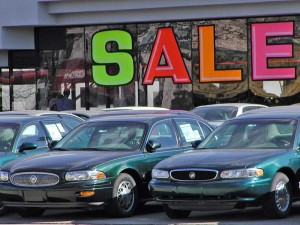
Big incentives, extended warranties, nothing seems to be moving consumers back to showrooms, yet. But J.D. Power does predict steady growth over the next five years.
The good news? The new car market appears to have bottomed out, in March, according to a report by J.D. Power and Associates. The bad news is that sales, during the first 16 days of April, were just holding pace with the dismal volumes of the first quarter.
If the trend holds for the rest of the month, we’ll be looking at a 33% decline, in April, says the California-based market research firm. That translates into a seasonally-adjusted annual sales rate, or SAAR, of just 7.8 million vehicles, at the retail level – compared 7.7 and 7.9 million units, respectively, in February and March.
“Industry sales are starting to show signs of stability-albeit at levels near 30-year lows-as the retail sales SAAR has been at or near the 7.8 million-unit level for the past three months,” said Gary Dilts, senior vice president of global automotive operations at J.D. Power and Associates.
 Power is forecasting a “modest increase” during the second half of 2009, which would bring the retail SAAR to 8.5 million, and the overall light-vehicle market – including fleet sales – to 10.4 million. The industry saw numbers in the 17-million range during the early years of the decade.
Power is forecasting a “modest increase” during the second half of 2009, which would bring the retail SAAR to 8.5 million, and the overall light-vehicle market – including fleet sales – to 10.4 million. The industry saw numbers in the 17-million range during the early years of the decade.
The new Power report underscores General Motors’ decision to take at least 170,000 units out of its production plans, over the summer. As TheDetroitBureau.com reports elsewhere, that means a majority of its plants will go on an extended, mid-year shutdown, as long as nine weeks.
Power is not entirely bearish on the auto industry, even though it expects that a recovery in U.S. automotive demand will take five years. “We expect market conditions to slowly improve during the remainder of 2009, which will lead us back to a solid industry with improved long-term fundamental growth,” said Jeff Schuster, the firm’s executive director of global forecasting.
In fact, Power’s forecast shows potential growth in vehicle demand of 20 million units, during the next five years, driven, the firm says, “by an increase in the number of households, consumers returning to the market with more vehicle equity in an improved credit environment, and an improved economy that will yield enhanced consumer options in the automotive market driven by new-vehicle launches.”
